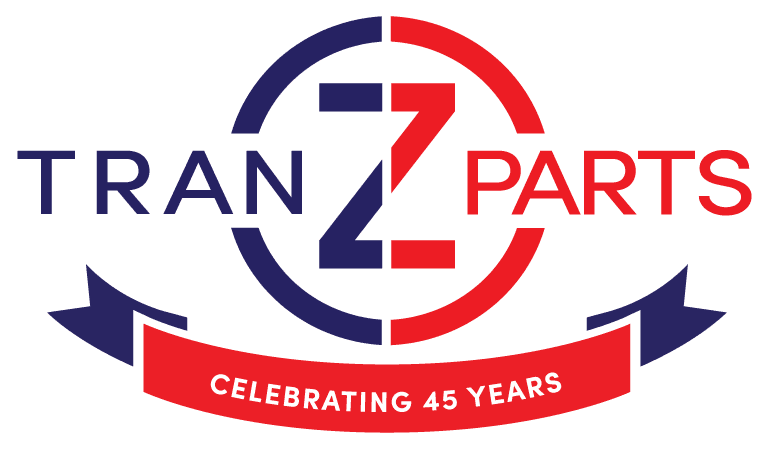Driving in fog presents a unique set of challenges, particularly for truck drivers who must contend with both the dense mist and the size of their vehicle. Fog can dramatically reduce visibility, making it difficult to see other vehicles, road signs, and even the road itself. For truck drivers, this lack of visibility increases the risk of accidents and complicates the task of maintaining a safe and steady journey. In such conditions, adhering to specific safety practices is crucial not only for the truck driver’s own safety but also for that of others on the road.
Fog is often associated with early mornings or late evenings, and it can vary in density and duration. A key part of driving safely in fog is understanding its effects on driving dynamics and how to adapt accordingly. Implementing appropriate strategies and using the right equipment can greatly enhance safety. From adjusting driving speeds to using fog lights correctly, each precaution plays a vital role in navigating through foggy conditions effectively.
In this comprehensive guide, we will explore the top tips for driving safely in fog that every truck driver should follow. These tips are designed to help you manage visibility issues, maintain control of your truck, and ensure you reach your destination without unnecessary risk. We will cover essential practices, vehicle maintenance advice, and equipment recommendations, all aimed at enhancing safety and efficiency in challenging foggy conditions.
Top Tips for Driving Safely in Fog
Reduce Your Speed: When driving in fog, it’s essential to significantly reduce your speed. Fog drastically limits visibility, making it challenging to judge distances and detect hazards. By driving slower than usual, you allow yourself more time to respond to sudden changes, such as a vehicle or obstacle appearing unexpectedly. Your stopping distance also increases in fog due to reduced visibility, so a slower speed helps compensate for this. Remember, it’s not just about the speed you’re travelling at, but also about giving yourself enough time to react to potential dangers. Adjusting your speed to match the conditions ensures that you can stop safely within the distance you can see.
Increase Following Distance: Increasing your following distance is crucial when driving in foggy conditions. The reduced visibility means you cannot see as far ahead, which affects your ability to react to the vehicle in front of you. By maintaining a greater distance, you give yourself more time to respond if the vehicle ahead suddenly brakes or encounters an obstruction. This increased gap also reduces the likelihood of a rear-end collision, as you’ll have more space to stop safely. Additionally, the greater distance provides a buffer in case the vehicle in front is involved in an accident or needs to stop suddenly, which can be especially important in dense fog.
Use Fog Lights Wisely Fog lights: are designed to cut through fog, rain, or snow and illuminate the road immediately in front of your truck. Unlike high beams, fog lights are angled downward, which helps reduce the amount of light that reflects off the fog and causes glare. Ensure that you use fog lights when driving in thick fog to improve your visibility without blinding other drivers. However, once the fog clears or visibility improves, switch off your fog lights to avoid distracting other drivers. Regularly check your fog lights to ensure they are functioning correctly and aligned properly for optimal performance.
Avoid High Beams: Using high beams in fog can actually make visibility worse rather than better. The light from high beams reflects off the fog, creating a blinding effect that makes it even harder to see the road ahead. The bright light can also create a glare that reduces your ability to see through the fog. Instead, rely on your low beams or fog lights to provide adequate illumination without reflecting off the fog. This approach ensures that you have a clear view of the road immediately in front of you and reduces the risk of glare that can affect your visibility.
Maintain Your Headlights: Proper maintenance of your truck’s headlights is crucial for safe driving in fog. Clean headlights ensure that you get the maximum amount of light on the road, which is essential for visibility in foggy conditions. Dirty or dim headlights can significantly reduce the effectiveness of your lighting, making it harder to see and be seen by other drivers. Regularly inspect your headlights for dirt, damage, or misalignment and clean them as needed. Ensure that your headlights are functioning correctly and replace any bulbs that are dim or burned out.
Keep Windows Clean: Foggy conditions often lead to moisture buildup on your windows, which can impair visibility. Regularly clean your windows to ensure a clear view, and check that your windscreen wipers and washer fluid are in good working order. Moisture and grime can create a film on your windows that reduces your ability to see through the fog. Keeping your windows clean and using your wipers and washer fluid effectively can help maintain a clear view and improve your safety while driving in foggy conditions.
Avoid Sudden Movements: Sudden acceleration, braking, or steering can lead to loss of control, especially in poor visibility conditions. Foggy weather can make it difficult to judge distances and respond to changes in the road. Driving smoothly and making gradual changes to your speed and direction can help maintain stability and control of your truck. Abrupt movements can also increase the risk of skidding or losing traction, so it’s important to handle your vehicle gently and predictably in foggy conditions.
Stay in Your Lane: Fog can make lane markings difficult to see, increasing the risk of drifting into other lanes. Stick to your lane and avoid weaving or making sudden lane changes without a clear view of the road. Using the lane markings as a guide can help you stay centred and avoid crossing into adjacent lanes. If you have difficulty seeing the road markings, focus on the road edges and maintain a steady course to stay within your lane.
Listen for Traffic: In foggy conditions, visibility is reduced, making it harder to see other vehicles until they are very close. Pay attention to the sound of traffic around you to get an early warning if other vehicles are nearby. Listening for engine sounds, horn blasts, or the approach of other vehicles can provide additional cues about traffic conditions and help you stay alert to potential hazards. Be especially cautious at intersections and when changing lanes, as other vehicles may be difficult to see.
Use Your Indicators Early Signalling your intentions early is crucial when driving in fog, as it provides other drivers with ample warning of your movements. Use your indicators well in advance of turning or changing lanes to give other drivers time to adjust their speed or position. In foggy conditions, visibility is reduced, so early signalling helps prevent misunderstandings and reduces the risk of collisions. Make sure your indicators are functioning correctly and use them consistently to communicate your intentions to other road users.
Avoid Using Cruise Control Cruise control: can be risky in foggy conditions, as it may cause you to maintain a speed that is too fast for the visibility and road conditions. Fog can make it difficult to judge the appropriate speed for safe driving, so it’s better to have full control over your speed and braking. By manually adjusting your speed, you can respond more effectively to changes in visibility and road conditions. Avoid using cruise control and stay actively engaged in controlling your vehicle’s speed to ensure safety in foggy weather.
Check Weather Conditions Regularly: Staying informed about weather conditions before starting your journey can help you prepare for fog and adjust your driving plan accordingly. Check weather forecasts from reliable sources to understand the expected visibility and any potential changes in weather. Being aware of current and upcoming conditions allows you to plan your route and driving strategy effectively. If fog is expected to be particularly dense or persistent, consider adjusting your travel plans or allowing extra time for your journey.
Ensure Proper Tyre Maintenance: Properly maintained tyres are essential for safe driving in all conditions, including fog. Check your tyres regularly for adequate tread depth and proper inflation to ensure they provide the necessary grip and control. In foggy conditions, having well-maintained tyres can improve your vehicle’s handling and braking performance, reducing the risk of skidding or losing control. Regularly inspect your tyres for wear and damage and replace them as needed to maintain optimal performance.
Use Roadside Assistance Tools: Carrying essential roadside assistance tools can be a lifesaver if you need to stop unexpectedly in fog. Flares, warning triangles, and reflective vests can help make your vehicle more visible to other drivers, reducing the risk of accidents. In the event of a breakdown or emergency, these tools can alert other drivers to your presence and improve your safety. Keep these items in your truck and ensure they are easily accessible in case you need them.
Keep Your Distance from Roadside Objects: In dense fog, objects on the roadside may become more difficult to see, increasing the risk of collisions. Maintain a safe distance from objects such as trees, signs, and barriers to avoid accidents. Fog can obscure these objects, making it challenging to judge their distance and position. By staying clear of roadside objects, you reduce the risk of hitting them and ensure a safer driving experience.
Understand Fog Patterns: Fog can vary in thickness and movement, affecting visibility in different ways. Pay attention to the fog patterns around you and adjust your driving accordingly. If the fog appears to be thickening or moving in your direction, consider finding a safe place to pull over until conditions improve. Understanding how fog behaves can help you make informed decisions about your driving strategy and improve your safety on the road.
Avoid Using Hazard Lights While Driving: Using hazard lights while driving in fog can create confusion for other drivers. Hazard lights are intended to indicate that your vehicle is stationary or experiencing an emergency, not for use while driving. Save hazard lights for when your vehicle is stopped and you need to alert other drivers to your presence. Using your headlights and fog lights properly provides sufficient visibility without causing unnecessary distractions.
Consider Route Alternatives: If foggy conditions are exceptionally thick or persistent, consider alternative routes that might offer better visibility. Planning ahead and having a backup route can help you avoid particularly dangerous areas and ensure a safer journey. Check for road conditions and visibility reports for alternative routes before you travel. Having options can prevent you from driving in hazardous conditions and allow you to complete your journey safely.
Regularly Check Your Brakes: Effective braking is crucial in foggy conditions, where visibility and reaction times are reduced. Ensure that your truck’s brakes are in excellent working order to respond promptly to any changes in the road or traffic conditions. Regularly inspect and maintain your brakes to ensure they provide reliable stopping power. Well-maintained brakes help you stop safely and avoid accidents in challenging conditions.
Stay Calm and Focused: Staying calm and focused is essential for driving safely in fog. Panic and hasty decisions can lead to erratic driving and increased risk of accidents. Keep your attention on the road and your surroundings to navigate fog safely. Maintain a steady pace and avoid distractions to ensure that you are fully engaged in driving. By staying calm and focused, you can manage the challenges of foggy conditions more effectively and drive safely.
Plan Your Route with Care: Before embarking on a journey in foggy conditions, it’s wise to plan your route thoroughly. Consider checking the route for any areas that are known for poor visibility or high accident rates in foggy weather. Use online maps and traffic updates to identify potential hazards and alternative routes. By planning your route with care, you can avoid particularly dangerous areas and choose roads that are better suited for foggy conditions. Additionally, consider scheduling breaks or finding safe places to stop if the fog becomes too dense to drive comfortably. Proper route planning helps reduce the stress and risk associated with driving in challenging weather.
Adjust Your Mirrors for Optimal Visibility: Properly adjusted mirrors are crucial for maintaining visibility in foggy conditions. Ensure that your side mirrors and rearview mirror are correctly aligned to provide the best possible view of the road and surrounding traffic. In fog, it can be challenging to see vehicles approaching from behind or the side, so having well-adjusted mirrors helps you stay aware of other road users. Regularly check and adjust your mirrors as needed to compensate for changes in visibility and road conditions. Clear and properly adjusted mirrors contribute to safer driving by improving your ability to monitor traffic and react to potential hazards.
Stay Informed About Road Closures and Conditions: Road conditions and closures can change rapidly, especially in adverse weather. Stay informed about any road closures, construction, or changes in traffic conditions that may impact your journey. Before you start driving, check for local traffic updates and road condition reports that may affect your route. Many regions provide real-time updates on road conditions through local news or transportation department websites. Being aware of road closures and conditions allows you to adjust your route or timing to avoid pro
Conclusion
Driving safely in fog requires a combination of careful planning, the right equipment, and attentiveness. By implementing these tips, truck drivers can significantly reduce the risks associated with reduced visibility and ensure a safer journey for themselves and others on the road. Remember to adjust your speed, use fog lights correctly, maintain your vehicle, and stay alert to changing conditions.
Foggy conditions demand heightened caution and preparation. By adhering to these guidelines and understanding how fog affects driving dynamics, you can navigate through challenging weather with confidence. Maintaining your vehicle and using appropriate safety equipment also plays a crucial role in ensuring safe travel.
At Tranzparts, we are dedicated to providing high-quality truck and trailer parts to support your safe driving needs. From fog lights to brake components, our extensive range of parts ensures your vehicle is equipped to handle various driving conditions. Trust Tranzparts to help you stay safe and efficient on the road.
Summary
In summary, driving in fog presents a significant challenge due to reduced visibility. Implementing safety practices such as reducing speed, increasing following distance, and using fog lights effectively can greatly improve your safety on the road. Regular maintenance of your vehicle, including keeping headlights and windows clean, and using appropriate roadside assistance tools, are also essential.
For truck drivers, it’s crucial to stay informed about weather conditions and adapt your driving habits to the fog. By following these tips and preparing your vehicle with quality parts from Tranzparts, you can ensure a safer driving experience in foggy conditions.
Tranzparts offers a wide range of truck and trailer parts, including high-performance fog lights, tyres, and brake components to keep your vehicle in top condition. Visit our website to explore our products and find everything you need to enhance your safety and performance on the road.




